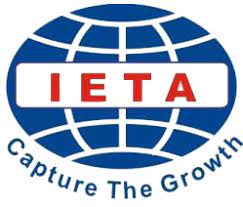PENGUNAAN KODE BAHASA OLEH GURU DALAM PENGAJARAN BAHASA INGGRIS DI SEKOLAH MENENGAH ATAS
 ),
), (1) Jurusan Bahasa dan Sastra Inggris FBSS Universitas Negeri Padang
 Corresponding Author
Corresponding Author
Copyright (c) 2017 Lingua Didaktika: Jurnal Bahasa dan Pembelajaran Bahasa
DOI : https://doi.org/10.24036/ld.v2i1.7356
Full Text:
 Language : id
Language : id
Abstract
This study is aimed at investigating how the English teachers used language codes in their classroom. The findings of the study revealed that the teachers used Indonesian and English interchangeably, and the larger proporsion is English. The teacher made a marked switching when the introduced new information or intructionand unmarked when there was no new information or instruction introduced. The switching also might occur when they translated what they have just said, and when they introduced the interaction particles at the beginning of their utterances. The findings of the study also revealed that the codeswitching in the classroom had pedagogical porposes. The teacher made switching for classroom management, humour, information clarification, understanding enhancedment, and content presentation.
References
Aachen, RWTH. 1998. “Codeswitching in a Bilingual history Lesson: Mother Tongue as a Conversational Lubricant”. International Journal of Bilingual Education and Bilingua-lism. 1:2, 81-99
Baustista, Maria Lourdes S.1984. The Filipino Bilingual’s Competence: A Model Based on an Analysis of Tagalog-English Code Switching. Canberra: ANU
Burt, Susan Meredith. 1992. Code-switching, convergence and compliance: The development of micro-community speech norms. Journal of multilingual and multi-cultural. 13/1-2
Cook, V...1991. Second language Learning and language teaching. Melbourne: Edward Arnold
ERIC Digest. 1995. Fostering Second Language Development in Young Children. Washington: ERIC Clearing house on Languages and linguistics ED386950
Fuller, Janet. 1993. Hearing Between the Line: Style Switching in a Courtroom Setting. Pragmatics 3:1. 29-43
Gal, S. 1979. Language Shift: Social determinants of linguistic change in Bilingual Austria. New York: Academic Press
Gibbons, John. 1987. Code mixing and code choice. England: Multilingual matters
Grosjean, François. 1982. Life with Two Languages: An Introduction to Bilingualism. Cambridge: Harvard University Press
Gumperz. J. Conversational codeswitching. In J Gumpertz. Discourse Strategies. Cambridge: CUP
Heath, Jeffrey. 1989. From Code-Switching to Borrowing: Foreign and Diglossic Mixing in Moroccan Arabic. London: Kegan Paul International
Hoffmann, Charlote. 1991. An Introduction to Bilingualism. London: Longman
Joshi, A. 1985. Processing of sentences with intrasentential code switching. In D. R. Dowty, L. Kattunen, & A. M. Zwicky (Eds.), Natural Language Parsing: Psychological, Computa-tional and Theoretical Perspectives. Cambridge: Cambridge University Press.
McClure, E. 1981. Formal and Functional aspects of code switched discourse of bilingual children. In R. Duran. Latino language and communicative behavior. New Jersey: Ablex
Meisel, Jürgen M. 1994. Code-Switching in Young Bilingual Children: The Acquisition of Grammatical Constrains. Cambridge: Cambridge University Press
Mustafa, Zahra & Mahmoud Al-Khatib. 1994. Code-mixing of Arabic and English in teaching science. World Englishes. Vol.13 No.2.pp.215-224
Myers-Scotton, Carol. 1993. Building the Frame in Codeswitching Evidence from Africa. In Mufwene, Salikiko S. and Moshi, Lioba. Current Issues in Linguistic Theory: Topics in Africa Lingustics. Amsterdam: John Benyamin Publishing
Myers-Scotton, Carol. 1992. Constructing the Frame in Intrasential Code-switching. Multilingua 11-1, 101-127.
Pakir, Anne. 1989. Linguistic alternants and code selection in Baba Malay. World Englishes. 8/3
Pan, Barbara Alexander. 1995. Code Negotiation in Bilingual Families: ‘My Body Starts Speaking English’. Journal of multilingual and multi-cultural development. Vol.16. No.4
Pennington, Martha c. et al. 1992. Toward a model of language choice among Hong Kong tertiary students: A Primari analysis. Hong Kong: City polytechnic
Poplack, S. (1981). The Syntactic structure and social function of code-switching. In R. Durán (Ed.) Latino language and communicative behavior. Norwood, New Jersey: Ablex
Romaine, S. 1989. Bilingualism. Blackwell
Myers-Scotton, Carol. 1993. Common and uncommon ground: Social and structural factors in codeswitching. Language in Society. 22/3
Sgall, Petr & Jiri Hronik.1993. Speakers attitude towards codeswitching. In Eva Eckert (ed). Varieties of Check: studies in Check sociolinguistics. Netherland: Rodopi.
Shields-Brodber, Kathryn. 1992. Dynamism and Assertiveness in the Public Voice: Turn-Talking and Code-Switching in Radio Talk Shows in Jamaica. Pragmatics 2:4 pp.487-504
Skiba, Richard. “Codeswitching as a countenance of Language Inter-ference”. The Internet TESL Journal.
Sounkalo, Jiddou. 1995. Code-Switching as Indexical of Native Language Lexical Deficiency in Mauritania. Journal of Multilingual and Multi-cultural Development. Vol. 16. No.5
Treffers-Daller, Jeanine. 1992. French-Dutch code switching in Brussels: Social factors explaining its dis-appearance. Journal of multi-lingual and multucultural Development. 13
Wei, Li. 1995. Three Generation. Two Languages, One Family: Language Choice and Language Shift in a Chinese Community in Britain. England: Multi lingual matters.
 Article Metrics
Article Metrics
 Abstract Views : 689 times
Abstract Views : 689 times
 PDF Downloaded : 177 times
PDF Downloaded : 177 times
Refbacks
- There are currently no refbacks.
Copyright (c) 2017 Lingua Didaktika: Jurnal Bahasa dan Pembelajaran Bahasa

This work is licensed under a Creative Commons Attribution-NonCommercial 4.0 International License.









